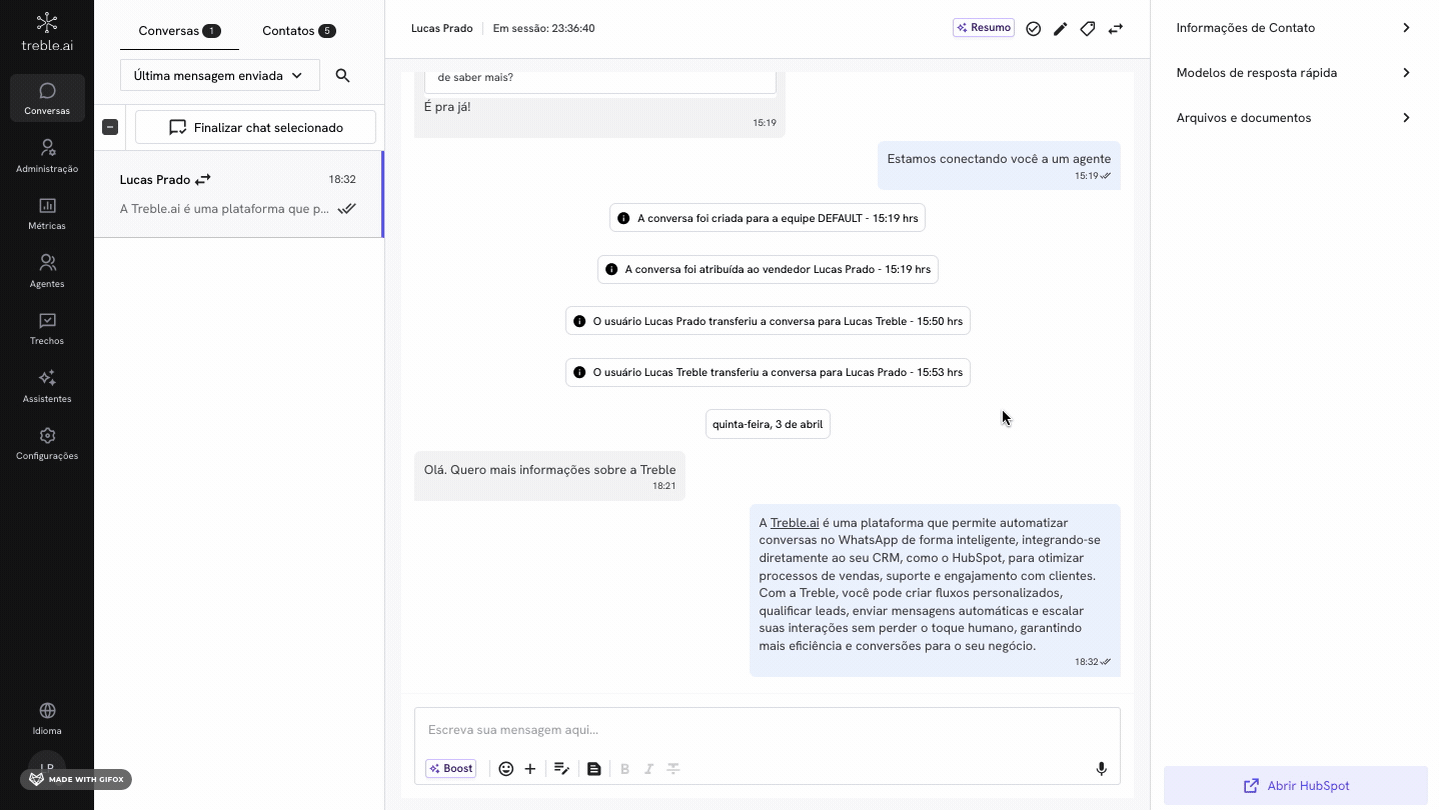Sections of the Main View
When you first log into the platform, you’ll see the main view. This view is divided into 3 sections: the incoming conversations view, the view for responding to conversations, and a panel on the right with account information. Let’s understand how each section works.Incoming Conversations View
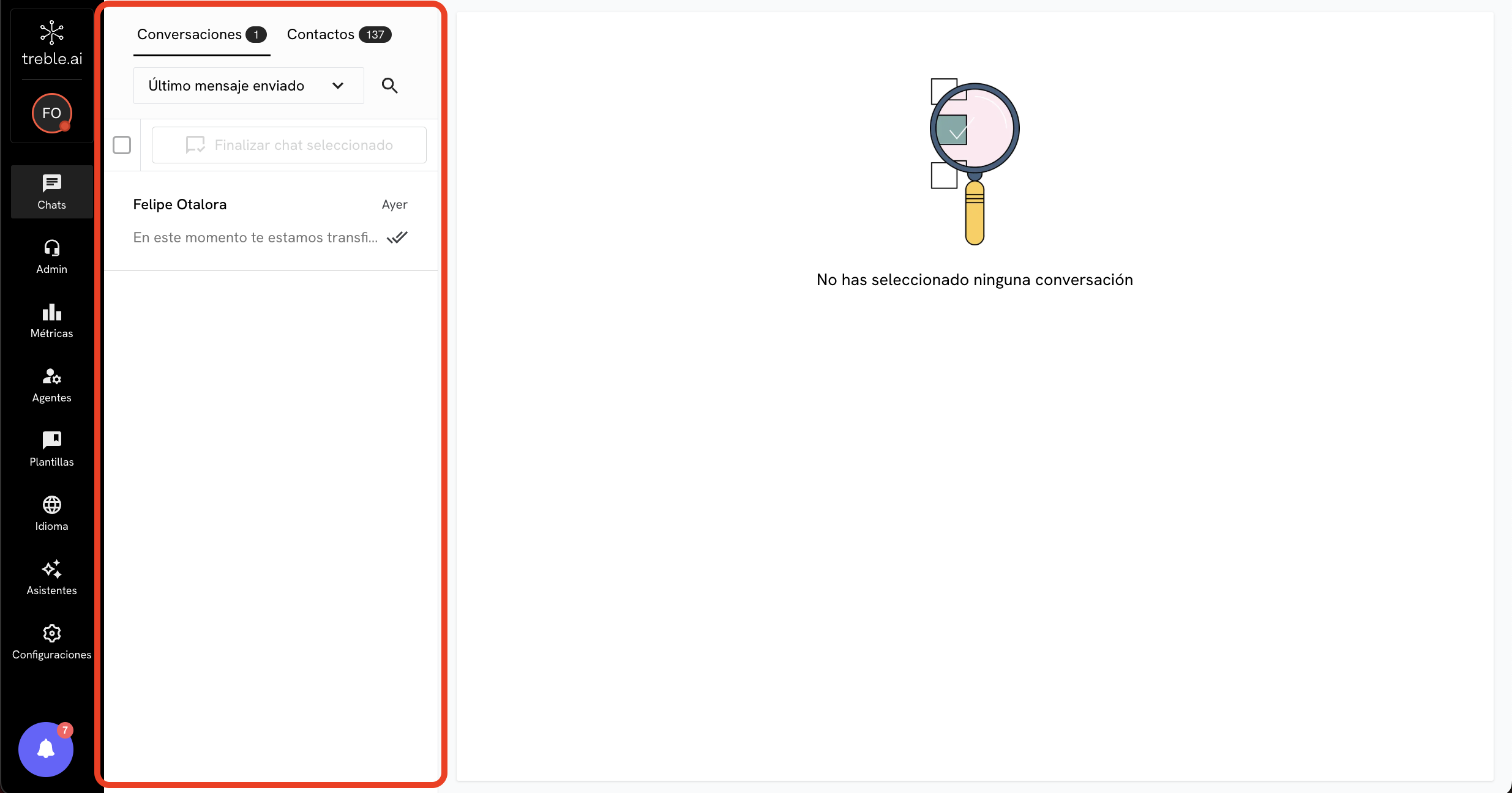
Active Status of an Agent
An important point is that as an agent, you can only see incoming conversations if your status is active. If your status is inactive, new conversations will not be assigned to you. To change your status, you can do so in the configuration panel on the left, by clicking on your profile icon and then clicking on Change to active. You’ll know you’re active when you see your profile icon in green.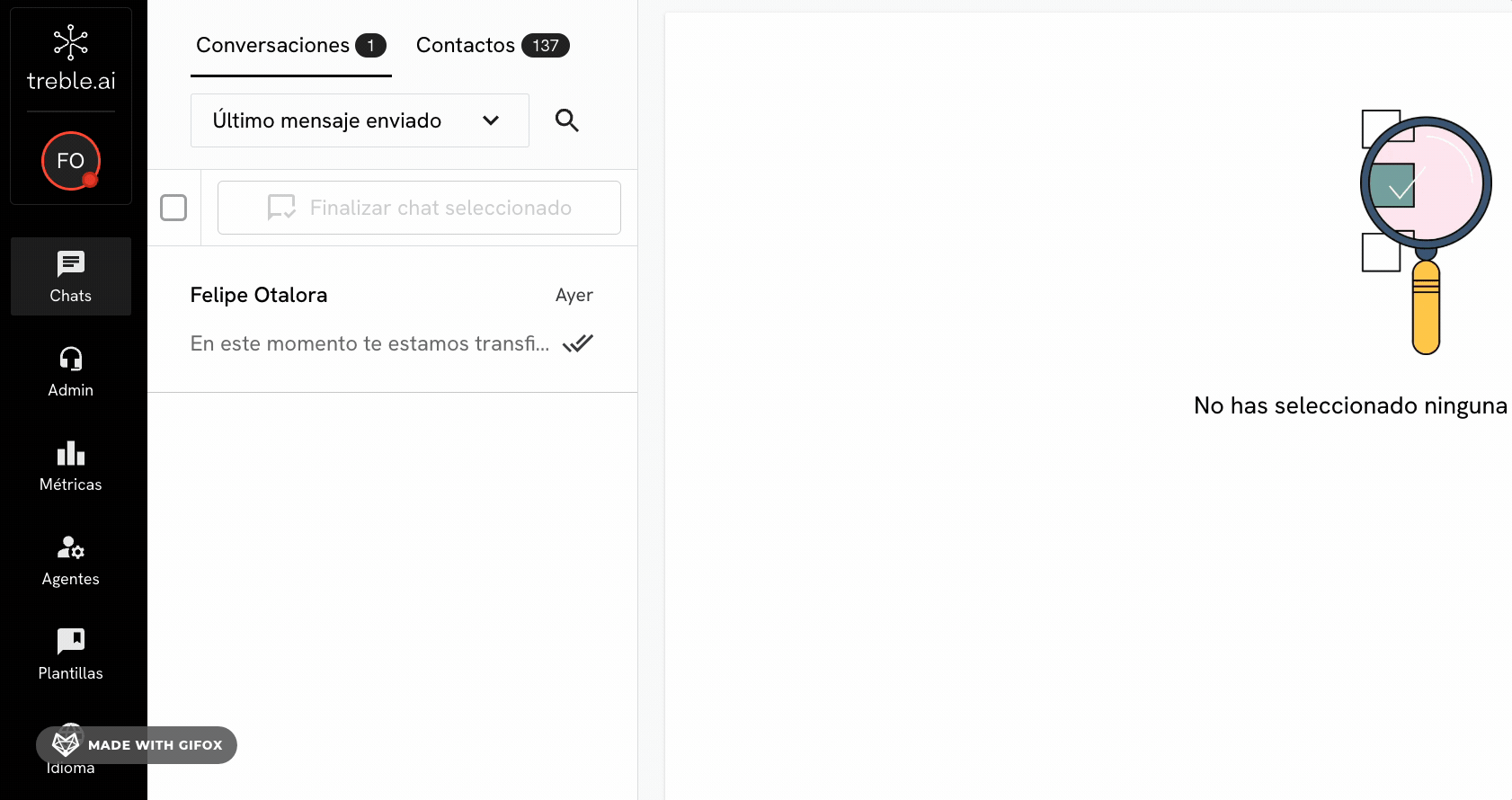
It’s important to mention that as an agent you can only receive conversations if you belong to a team and the conversation is for your team. If you don’t belong to a team, or you belong to a team but the conversation isn’t for your team, you won’t be able to see the conversation.
- Last message sent
- Last message by client
- New conversations
- Transferred conversations
- Tag color
View for Responding to Conversations
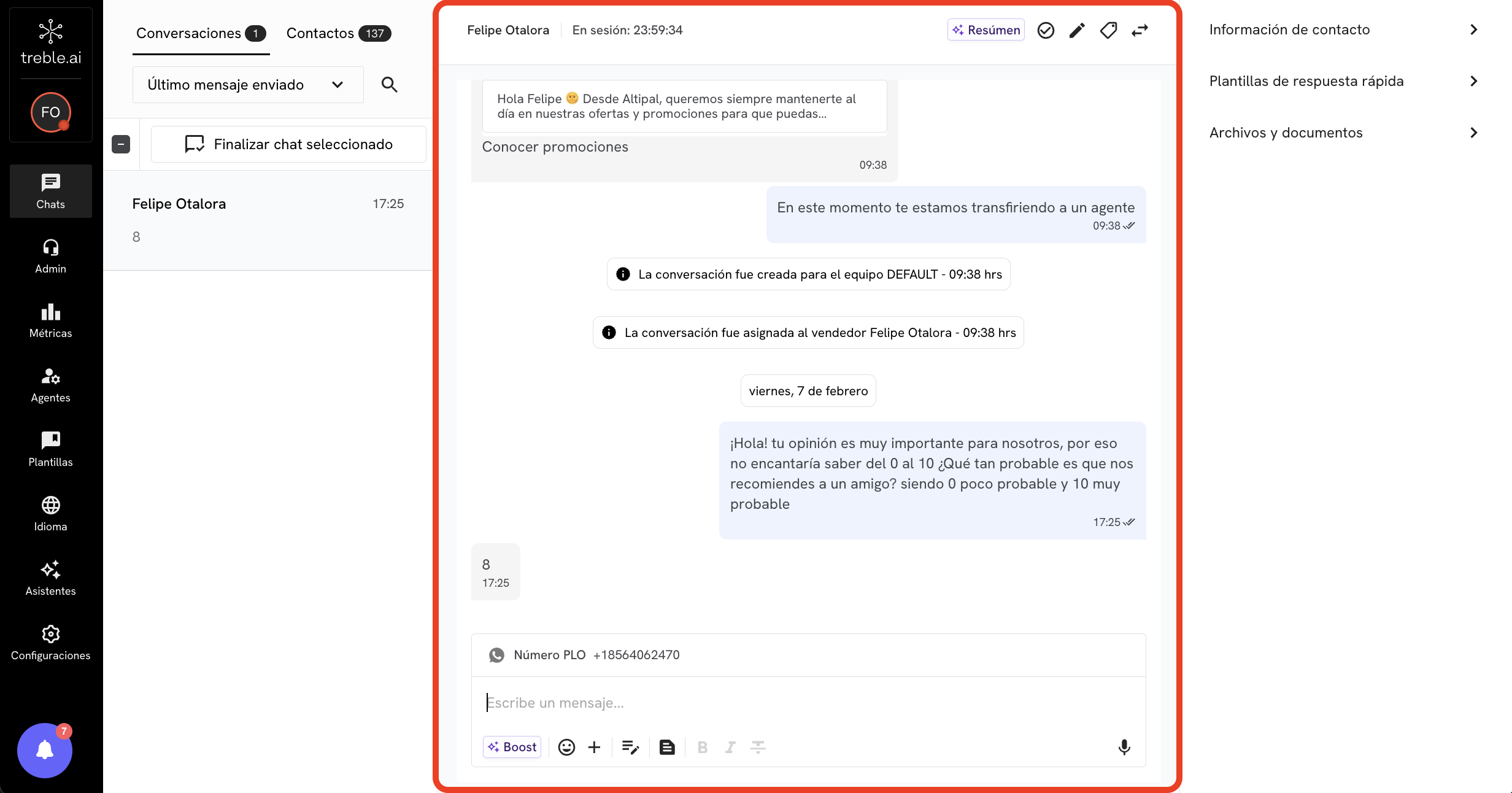
- The customer’s name. This can be the name that the customer has in their WhatsApp account or you’ll see the customer’s phone number.
- Session duration: Chats can only be kept open for 24 hours. If the customer doesn’t respond within that time, the chat will close and you won’t be able to respond.
- Artificial intelligence function to generate a summary of the conversation. Your agent can use this function to generate a summary of the conversation.
- Button to end the conversation with the customer.
- Button to edit customer information.
- Button to add a tag to the conversation.
- Button to transfer the conversation to another agent.
Account Information Panel
In the account information panel, you’ll see additional information about the conversation. Here you can find Contact information, Quick response templates, and Attached files and documents.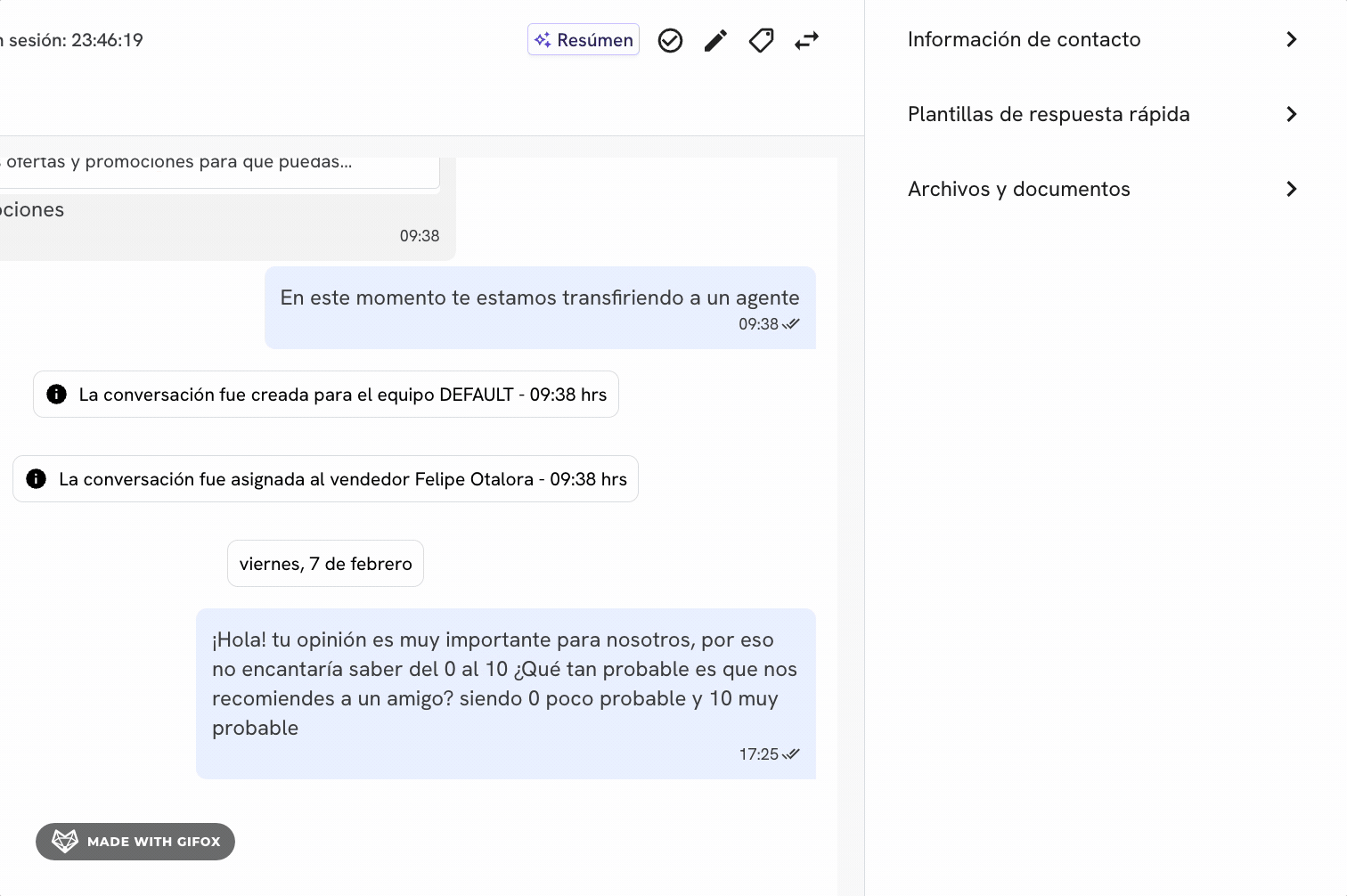
Transferring Conversations
Offer a smoother experience to your customer by transferring chats to other departments or agents.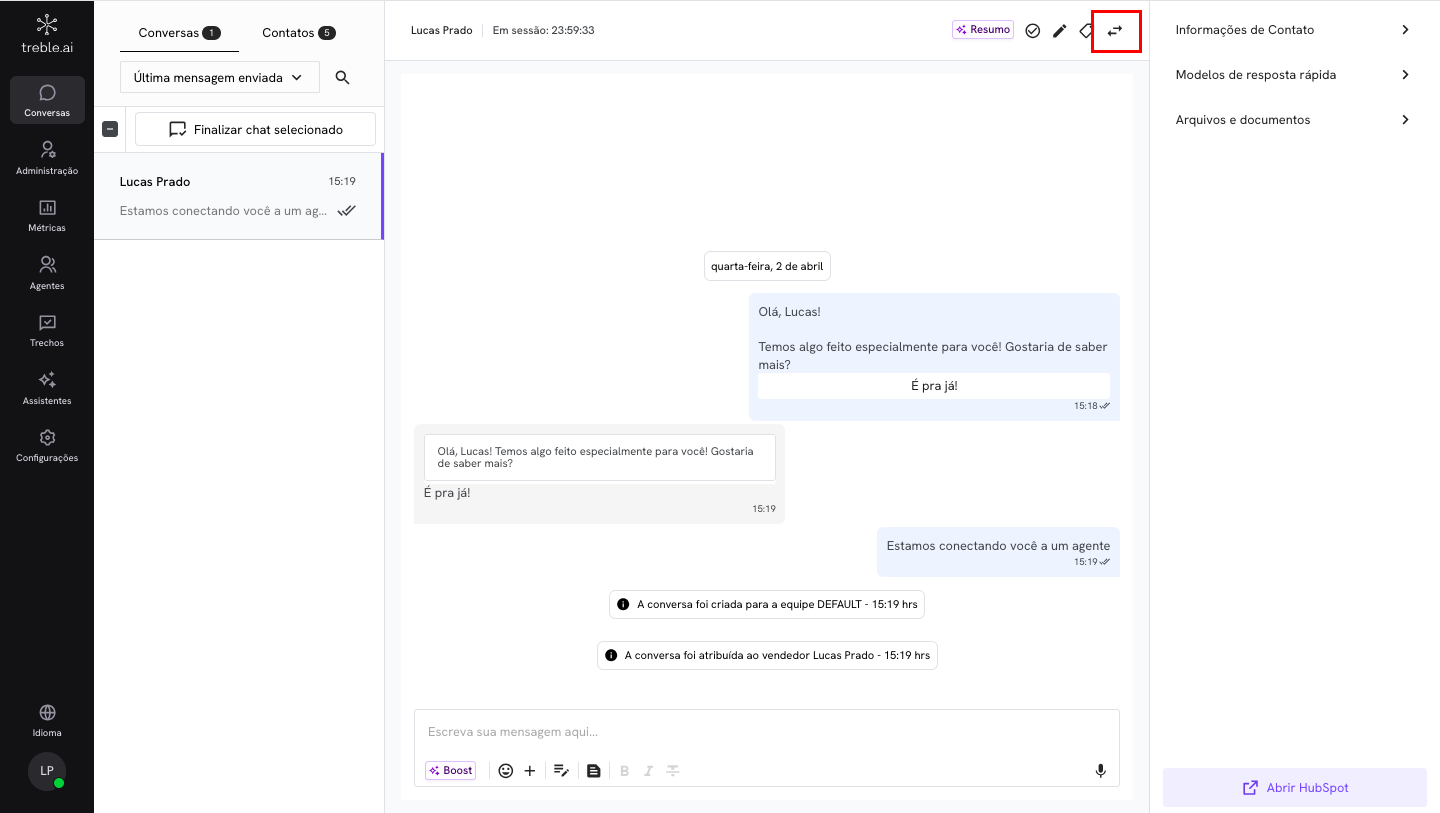
Why is it important to master conversation transfers?
Sometimes, our customers contact us to deal with a specific issue, but they may select an incorrect option in the decision tree or interpret the available options differently than intended. Another important situation is when you need to change your status to inactive on the platform, making it necessary to transfer the conversation to a colleague who will continue with customer service.How to transfer a conversation?
To transfer a conversation, click on the two arrows icon located in the upper left corner of the page, in the top menu.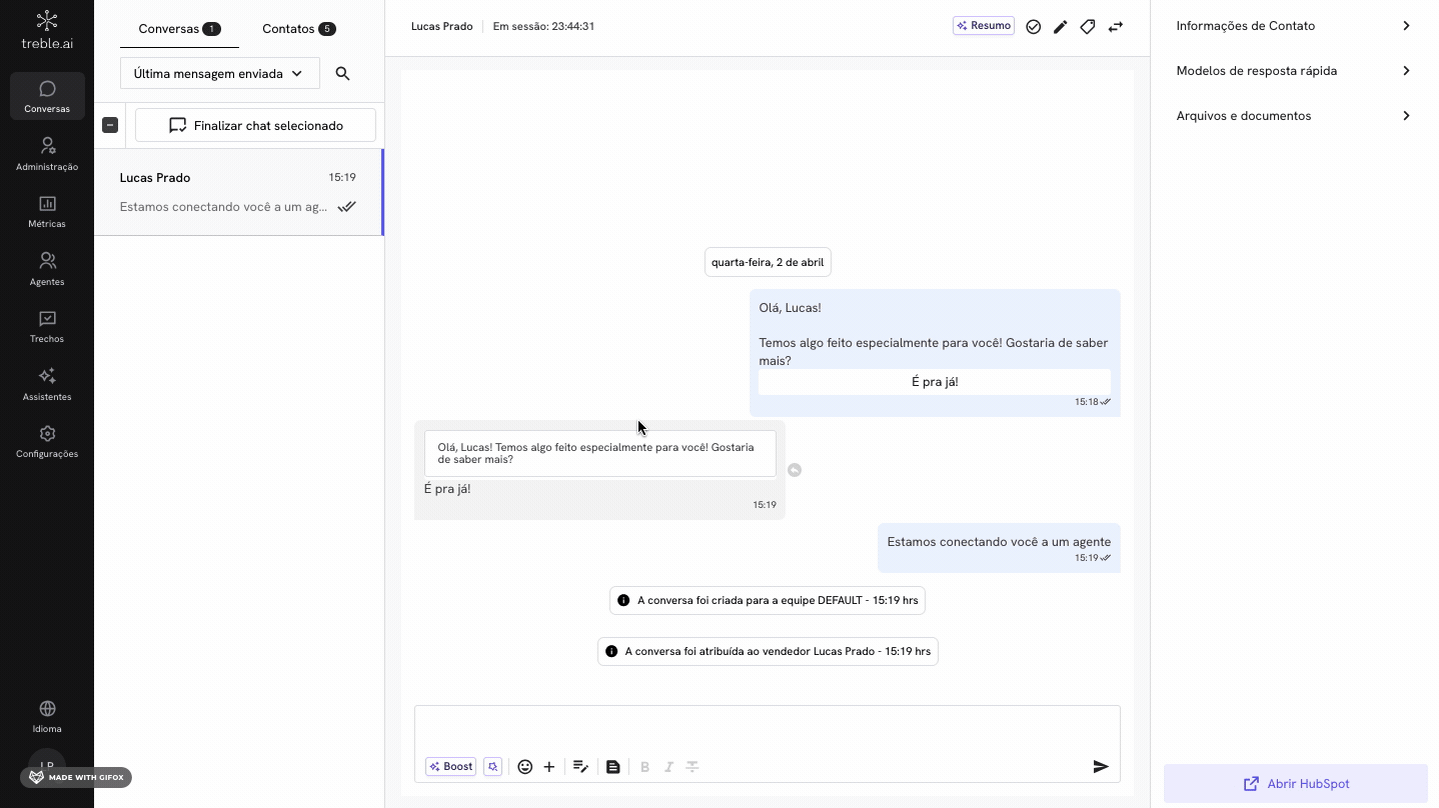
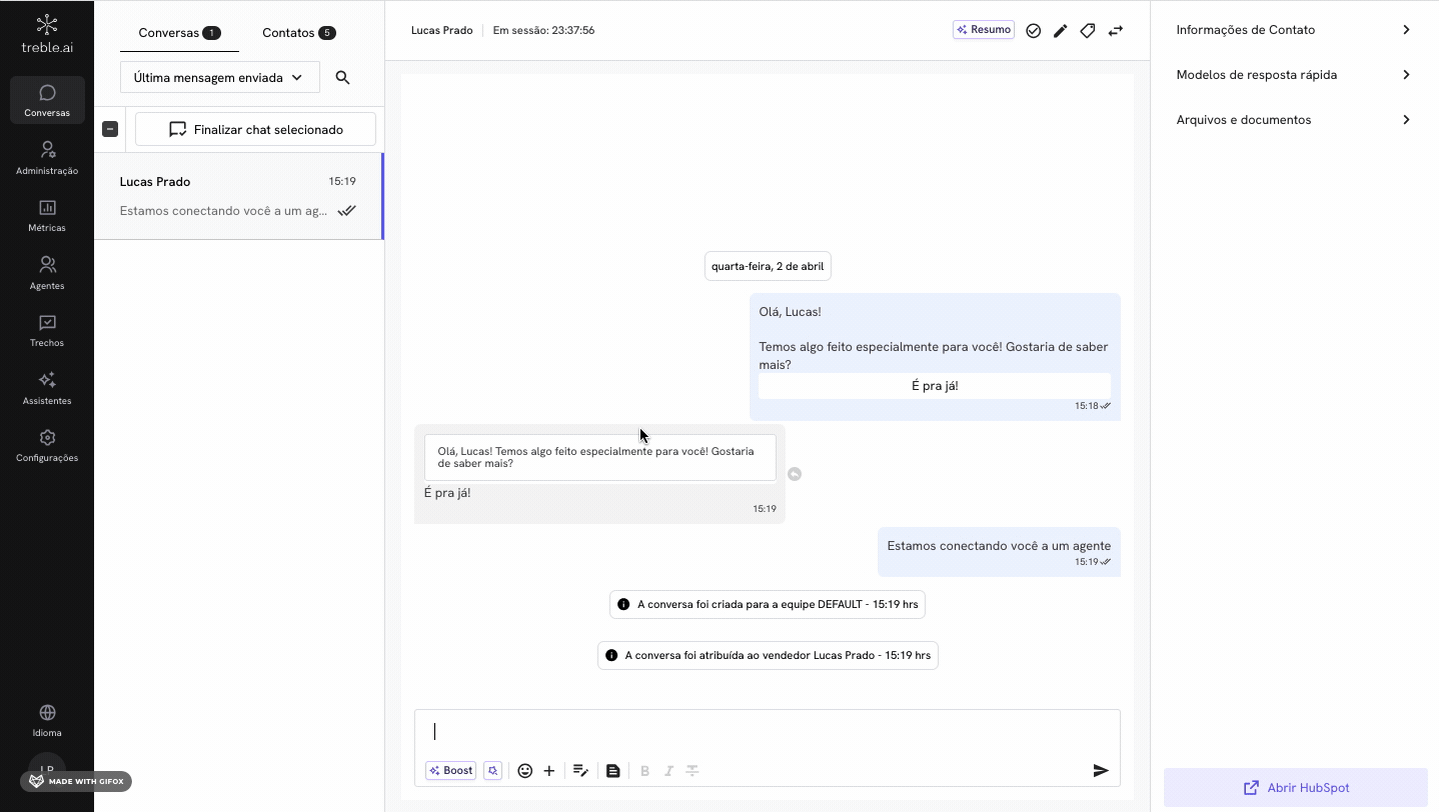
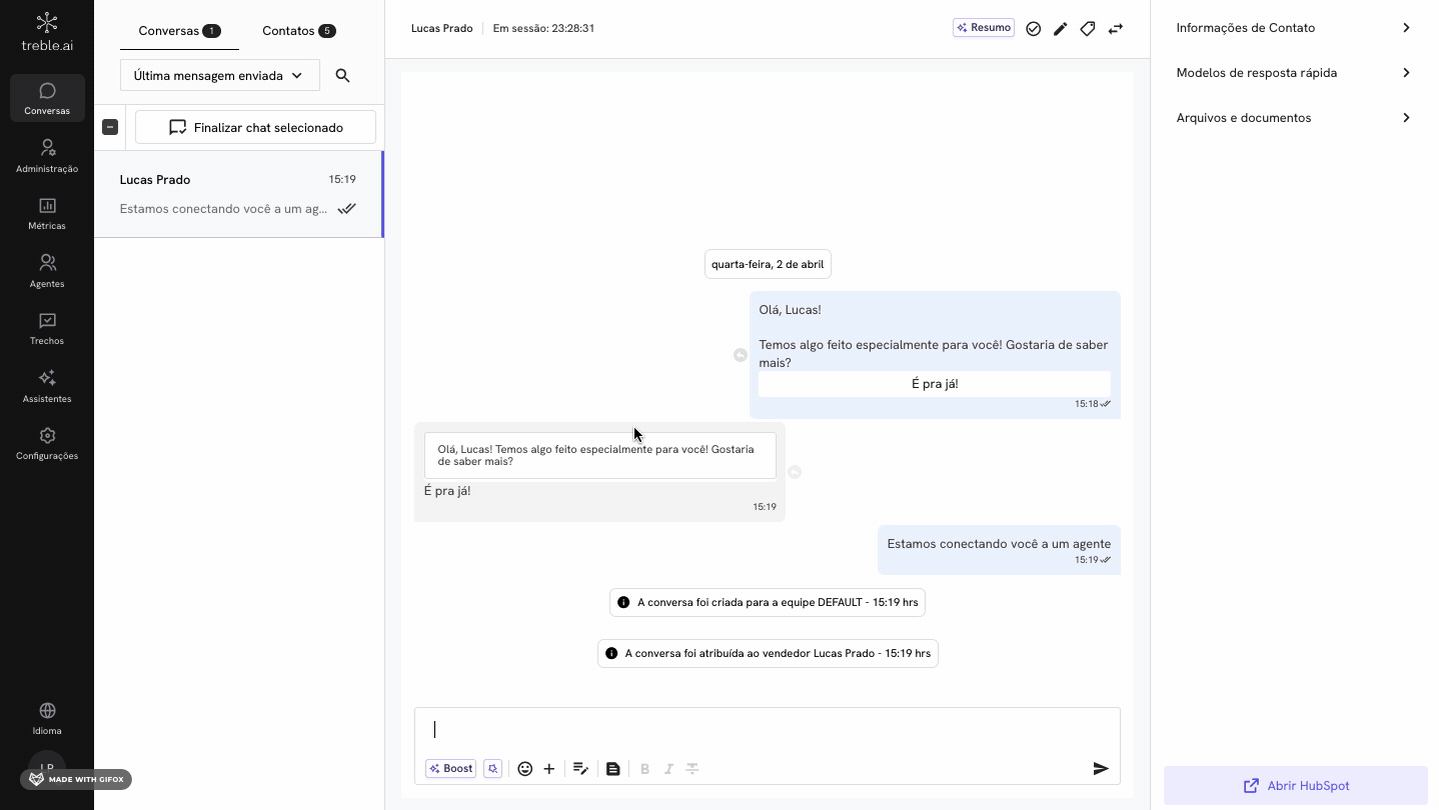

Conversation Tags
Tags are a way to categorize conversations. You can add tags to conversations so you can organize and search for them more easily.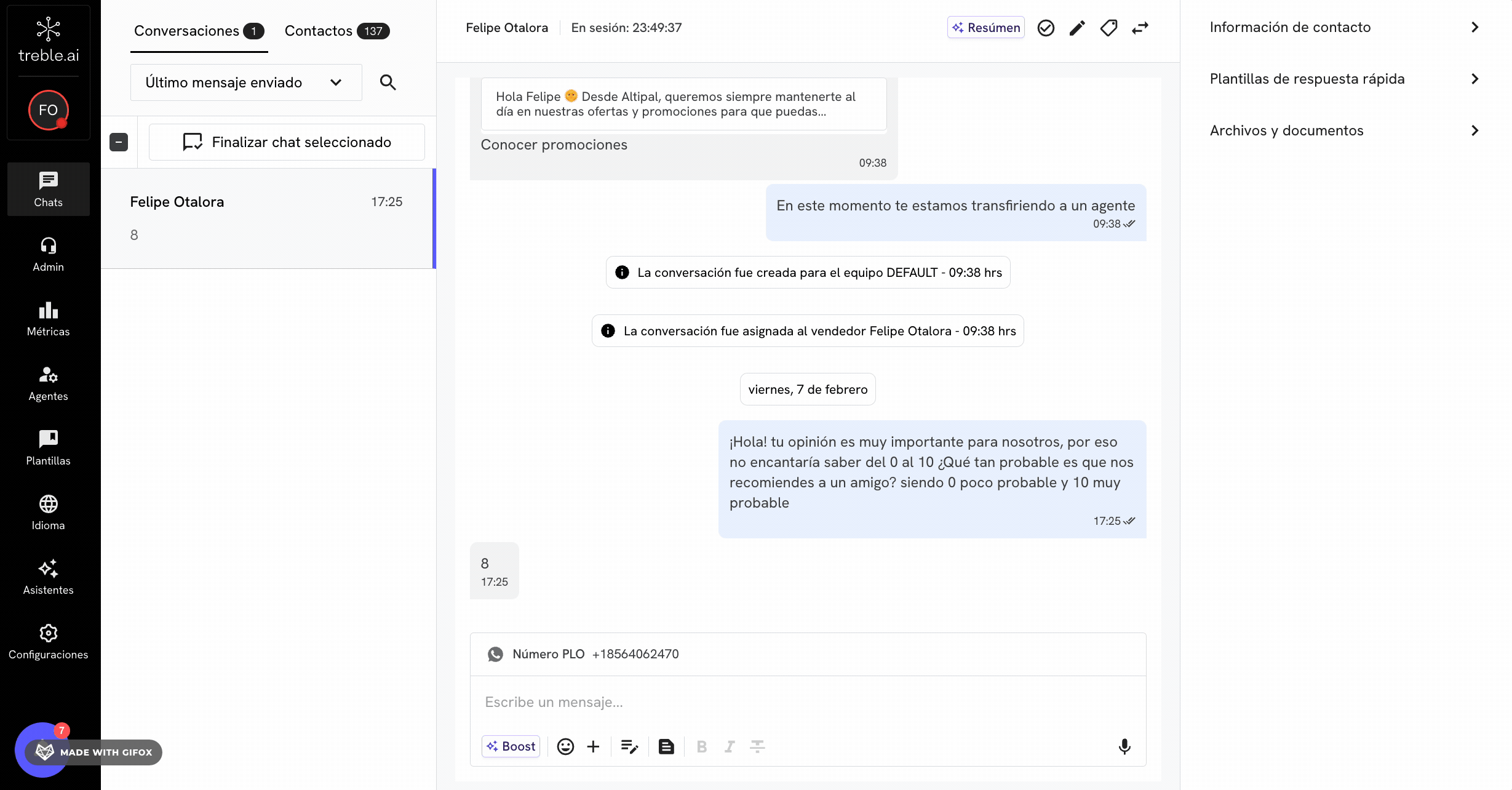
How do tags work in Treble.ai?
Treble.ai allows you to add custom tags to conversations, categorizing the interactions according to your needs. These tags help structure the workflow and can be used to:- Filter and locate conversations quickly within the platform.
- Track the status of a service (example: “Pending”, “Resolved”, “Waiting for response”).
- Identify patterns of behavior and customer needs.

Main benefits of using tags in Treble.ai
- Organization and prioritization
- Improvement in internal communication
- Generation of strategic reports
How to create tags for conversations?
It’s important to note that, although any agent can use tags, only administrators have permission to create them, thus ensuring the organization of the system. To create them, the administrator must access the top of the chat, click on the tags icon, and start the creation process. They will be able to name the tag and choose a color that represents the situation they want to highlight.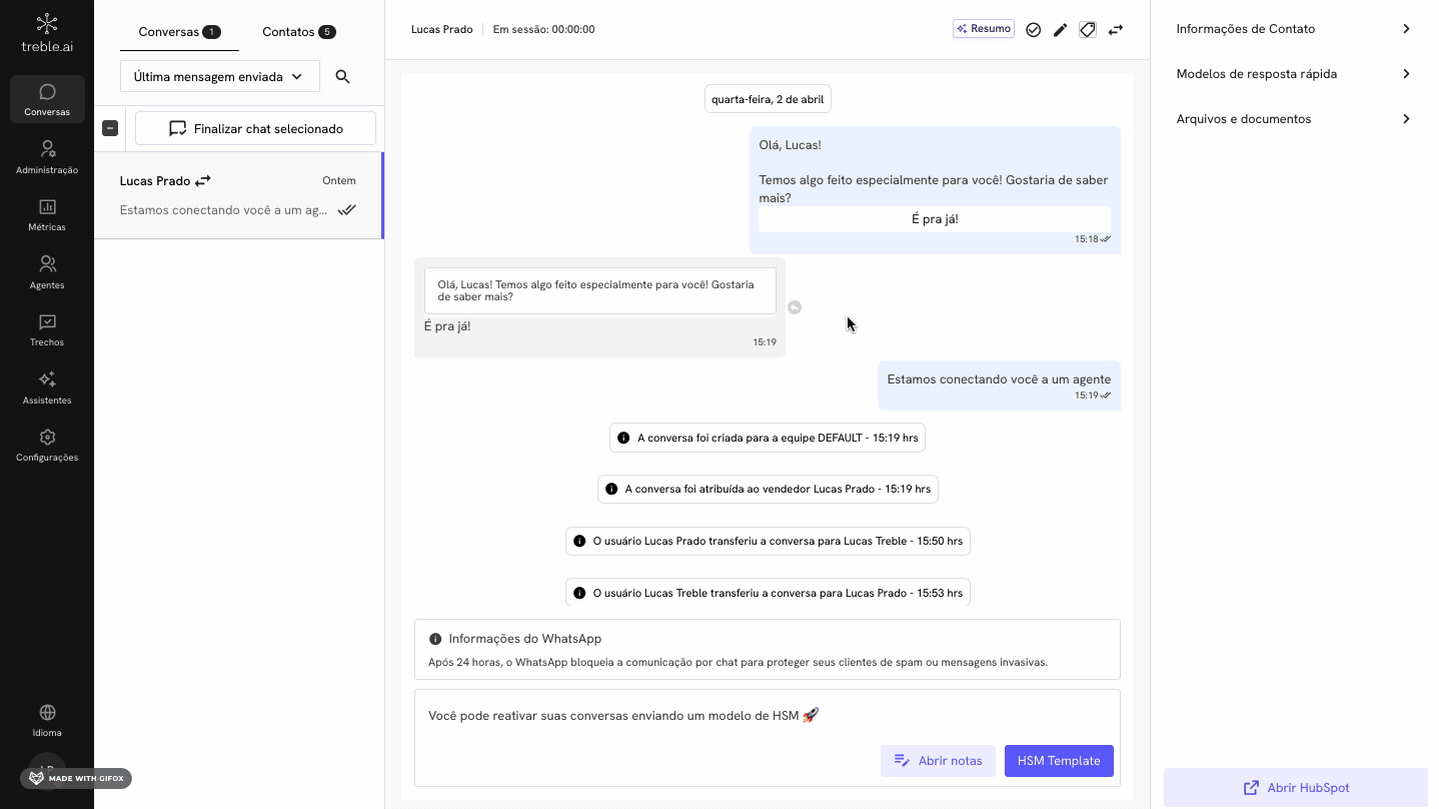
Example of practical use of tags in Treble.ai
Imagine that a customer contacted you with a question about payments. The agent can apply the “Financial Query” tag and, if necessary, refer to the financial team. If the conversation needs a follow-up later, it can receive the “Awaiting Return” tag, ensuring that no service is lost.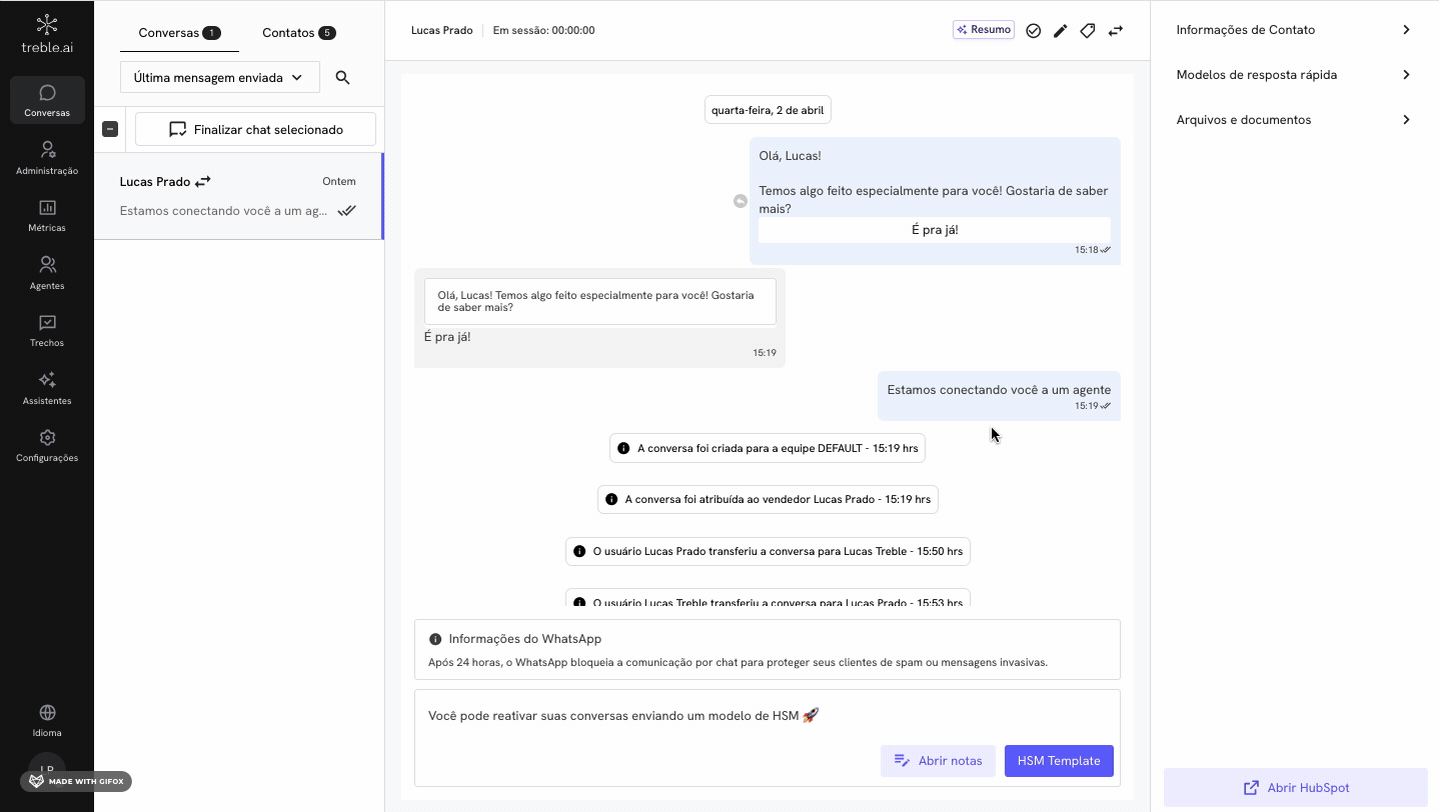
Attention! In Treble.ai, the use of tags makes service more agile, efficient, and strategic, helping teams maintain fluid and organized communication. Implementing a standardized tag system is a simple and powerful way to improve customer experience and optimize your company’s operation! 💡
24-hour session of a conversation
Understand the functioning of the 24-hour windows used in WhatsApp API.What are sessions?
Sessions are 24-hour time windows that begin when a customer sends a message through WhatsApp Business API. During this period, the company can freely respond to the customer. The session is renewed for another 24 hours each time the customer responds, allowing conversations to extend over several days, as long as there is constant interaction. However, if the company tries to respond after that time limit, WhatsApp blocks the sending of normal messages. This happens because WhatsApp wants to prevent SPAM and ensure that companies communicate in a relevant way.
How to continue the conversation after 24 hours?
If the window has closed and you need to resume contact, the only way to send a message is by using a Message Template (HSM) approved by WhatsApp.What is a Message Template (HSM)?
- It’s a message pre-approved by WhatsApp that can be used to reopen the conversation.
- It can contain dynamic variables (e.g.: customer name, scheduling date).
- It can be categorized as:
- Transactional (example: “Your order has been confirmed! 🚀”)
- Marketing (example: “We have a special offer for you!”)
Practical example
Imagine that a customer contacted you at 10 in the morning yesterday and your team responded normally throughout the day. However, today, at 12 noon, you realize you need to send a new message, but the window has already closed. 🔴 Attempt to send a normal message → WhatsApp blocks it. ✅ Sending an approved Message Template → WhatsApp allows reopening the conversation. As soon as the customer responds to the template, a new 24-hour window is opened, allowing normal conversations again.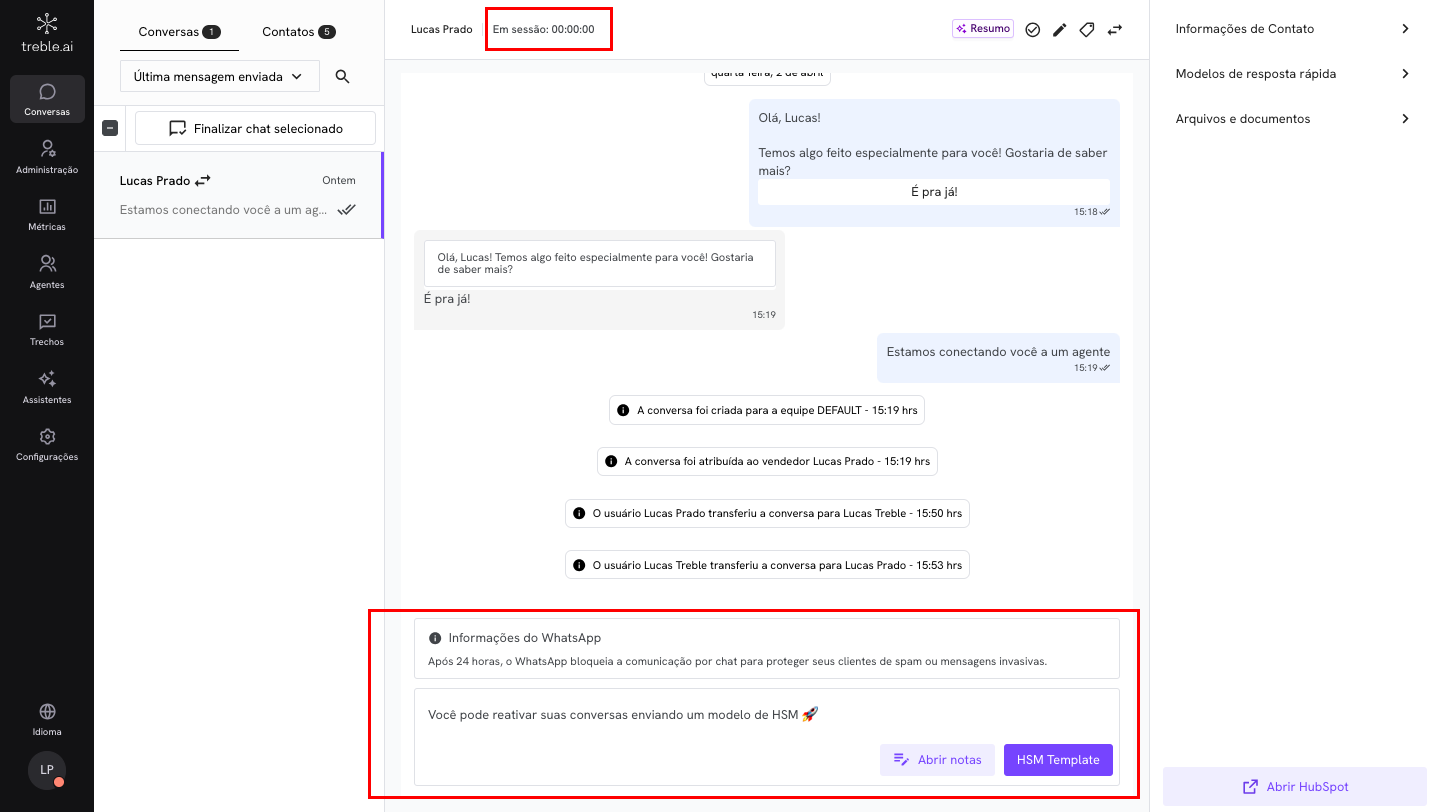
How to monitor the status of a conversation session?
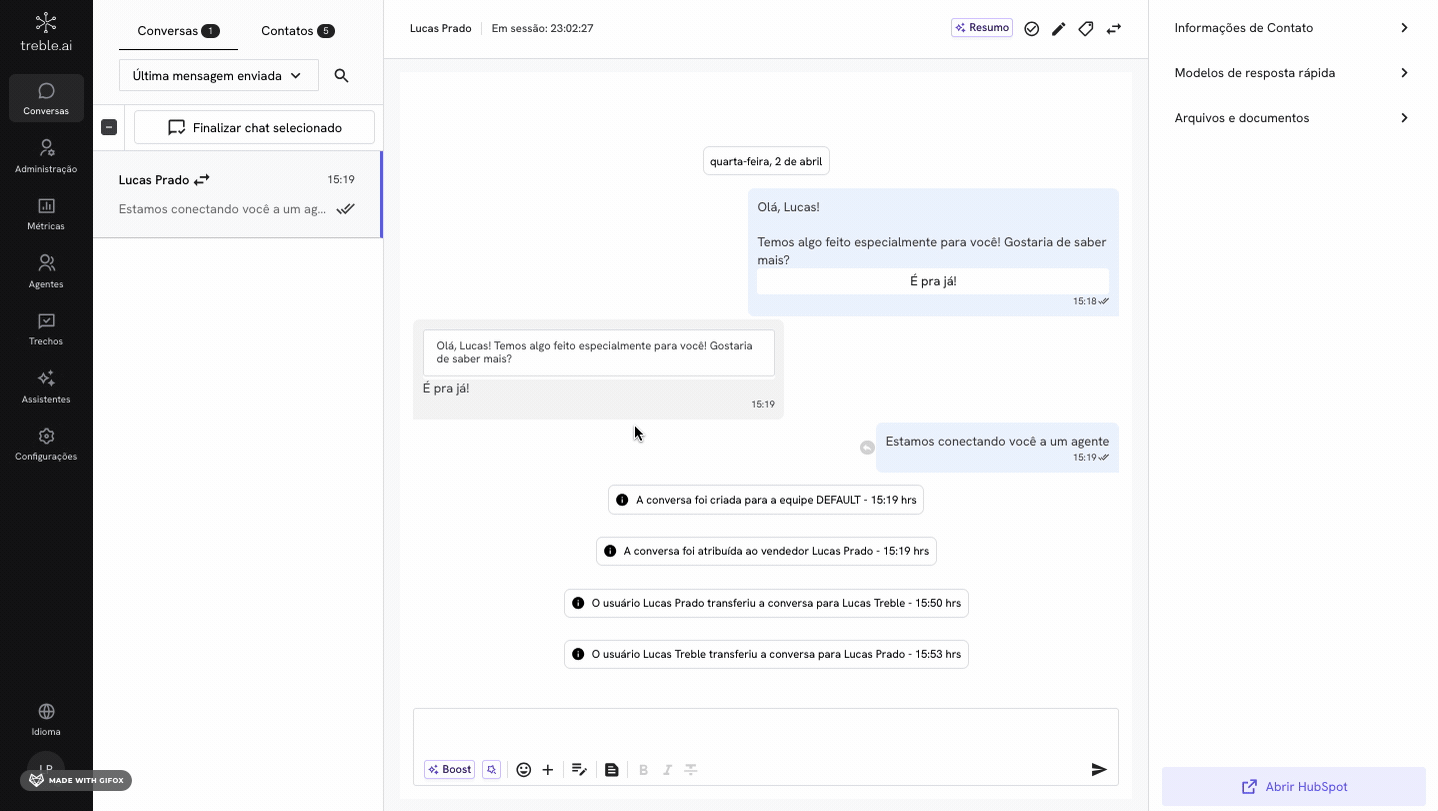
How to keep the conversation open?
- Encourage user responses: Ask for some interaction to ensure that the window stays open.
- Monitor the session time: Implement internal notifications so agents know when a session is about to expire.
Conversation Summary Button
In Treble.ai, the “Summary” function allows agents to obtain an automatic summary of the conversation with the customer, generated by artificial intelligence. This resource facilitates the follow-up of past services, ensuring that any agent who interacts with the customer has access to essential information without needing to read the entire previous conversation.How does the “Summary” button work?
The “Summary” button can be activated every 10 minutes and generates an automated summary of the ongoing conversation. This note is linked to the conversation and can be accessed by any agent who attends to that customer in the future. The main uses of this resource include:- Recording important details of the service without manual effort.
- Maintaining an accessible and summarized history for any agent.
- Avoiding repetitive questions, as the agent will have a previous context.
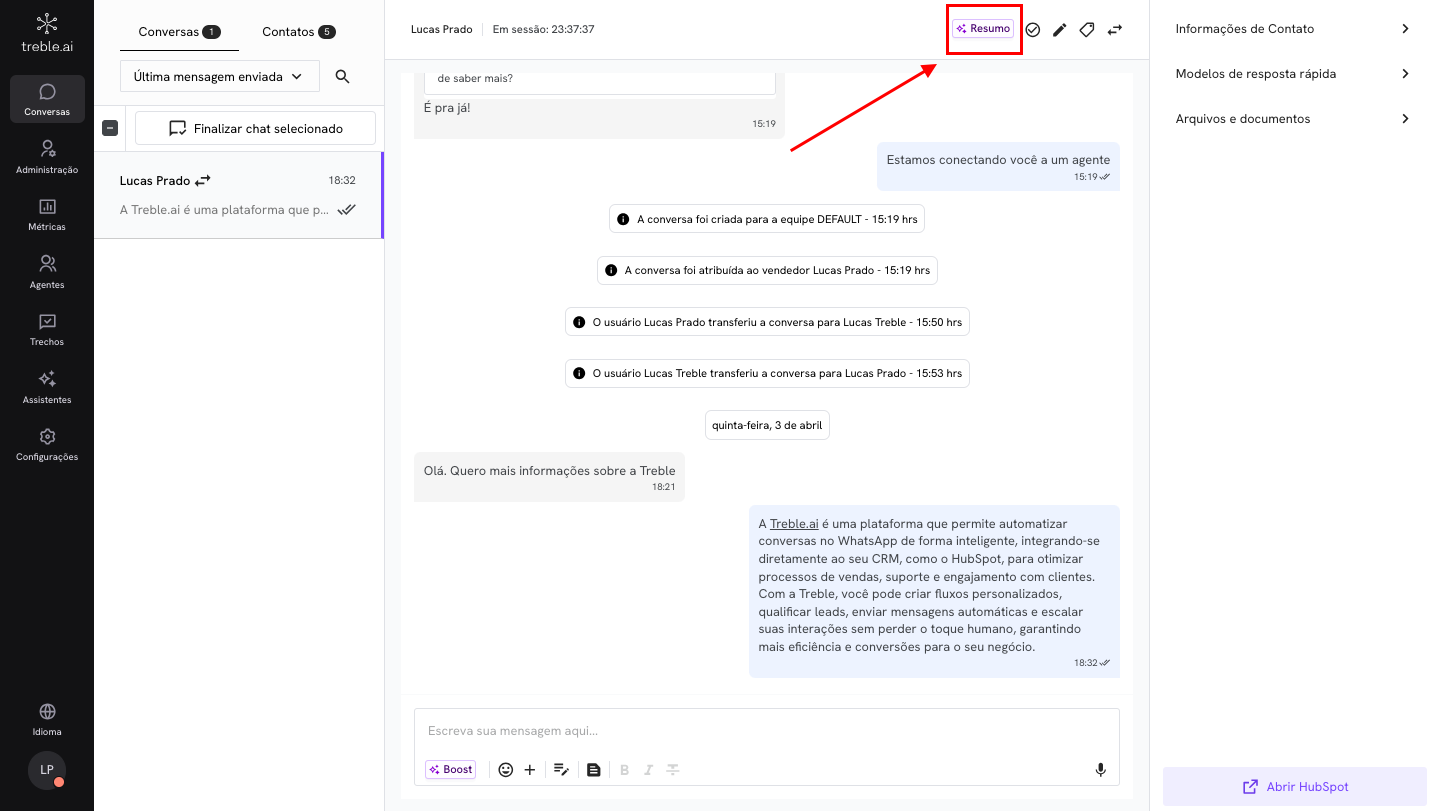
Main benefits of automatic summary
Improvement in internal communication
All agents can access previous summaries, ensuring that the customer doesn’t need to repeat information in new services.Increased efficiency in service
With a summarized history, agents can resume the conversation quickly without needing to review long message histories.Structured record for analysis
Summaries generated by AI facilitate the tracking of service patterns, helping the company better understand customer needs.How to use the automatic summary in Treble.ai?
Simply click on the “Summary” button for the AI to generate a summary of the conversation. The agent can write more information in addition to what is already present in the note, ensuring that the record is useful for future interactions.